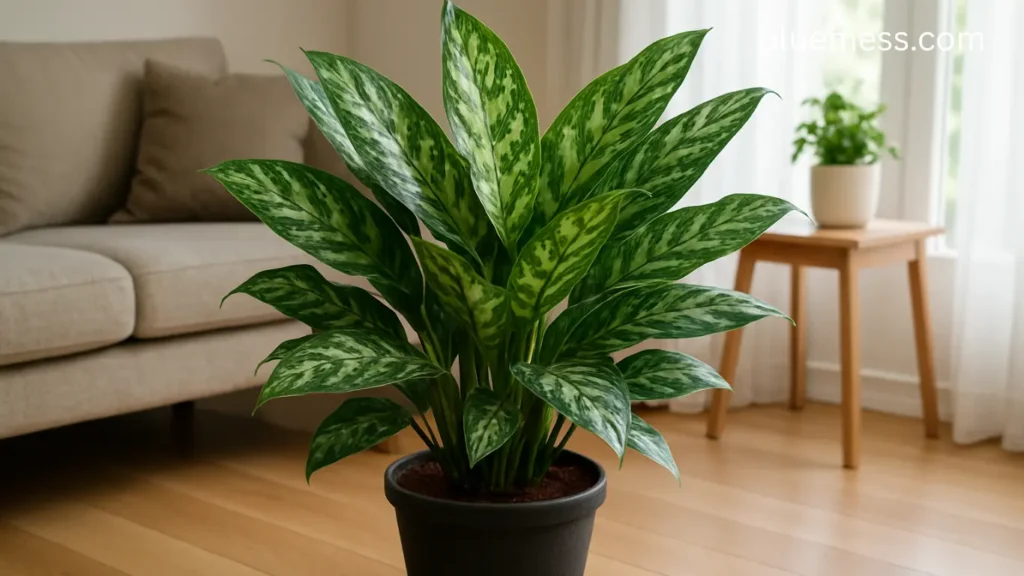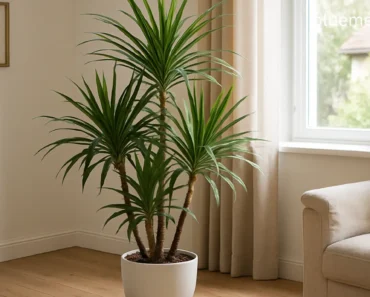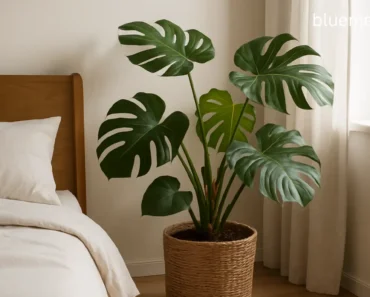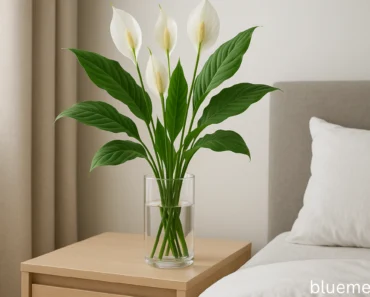
Table of Contents
Introduction: Why Chinese Evergreens Are a Must-Have Houseplant
Chinese Evergreens, celebrated for their lush foliage and easy-going nature, are a favorite among plant lovers worldwide. Whether you’re a seasoned plant parent or just starting out, their combination of stunning looks and simple care makes them a great addition to any indoor space.
Aglaonema plants are commonly referred to as Chinese Evergreens and represent one of the easiest houseplants to care for, making them a good choice for beginners who want to experience success with indoor gardening. These remarkable plants have earned their reputation as some of the best plants for low light conditions, thriving in environments where other houseplants might struggle.
This comprehensive guide covers everything you need to know about chinese evergreen care – from basic maintenance to advanced troubleshooting and propagation techniques. Think of this as your ultimate resource that remains relevant and valuable over time, helping you nurture healthy, vibrant Aglaonemas for years to come.
Understanding Your Chinese Evergreen (Aglaonema): Key qualities and background for Aglaonema care.
Chinese evergreen plants are members of the Aglaonema genus, classified as tropical perennial plants that are prized for their easy care requirements and long-lasting colorful foliage. Originally native to the tropical and subtropical regions of Asia, these plants have adapted beautifully to indoor environments, earning common names like Aglaonema, Chinese Evergreen, and affectionately, “Ags” among plant enthusiasts.
Diversity in Varieties & Visual Appeal
A standout feature of aglaonema varieties is the diversity in leaf size, shape, color, and pattern. Popular options include ‘Silver Queen’ with silver-green foliage, ‘Silver Bay’ with bold silver markings, vibrant ‘Siam Aurora’ showing pink and red, deep green ‘Emerald Beauty,’ compact ‘Maria,’ romantic ‘Pink Valentine,’ and sparkling ‘First Diamond.’
Chinese Evergreens showcase shades from green and silver to striking whites, pinks, reds, and multi-colored variegation. This variety ensures a match for nearly any interior decor or personal taste.
Actionable Tip: When choosing varieties, take photos of your plants’ leaves in different lighting. Compare these photos to adjust your plant’s light placement and keep colors vibrant.
Growth Rate & Size Expectations
Chinese Evergreens grow at a slow to moderate pace, ideal for those wanting plants that fit their space long-term. Expect growth to slow in winter or low light, which is normal during these times.
Varieties differ in size from compact 10-inch plants for tables to large 3-4 foot floor plants. Their versatility makes them useful in tabletop displays, wide floor arrangements, large containers, dish gardens, and living wall installations.
Essential Care for a Thriving Chinese Evergreen: Key care needs for healthy, vibrant plants.
Proper lighting is essential for Chinese Evergreens. Most prefer low to moderate light, with many thriving in shade where other houseplants would struggle. This adaptability makes them excellent choices for offices, bathrooms, or north-facing rooms.
However, colorful varieties require bright, indirect light to maintain their vibrant hues and overall health. Without adequate light, these stunning specimens may lose their distinctive coloration and develop weaker growth patterns.
Avoid placing Chinese Evergreens in direct sunlight, as too much direct sun can scorch the delicate leaves, causing permanent damage. Signs of incorrect lighting include leaves losing their variegation and color, along with smaller, weaker growth patterns.
Actionable Tip: Rotate your Chinese Evergreen a quarter turn every time you water to promote even growth and a balanced appearance.
Watering: Finding the Right Balance
Proper watering technique is crucial for chinese evergreen care. These plants prefer their soil to dry out slightly between waterings – aim to water when the top inch or so of the potting mix has dried. This prevents both overwatering and underwatering, two common causes of plant stress.
Consistently soggy soil leads to root rot, often accompanied by yellowing leaves and a foul odor from the soil. Conversely, if the soil becomes too dry, plants may also show distress through yellowing leaves, making it important to find the right balance.
Watering frequency depends on several factors including pot size, soil type, plant location, and your home’s environment. During colder months, reduce watering frequency as plant growth slows. Always ensure your pot has at least one drainage hole to prevent water accumulation.
Water quality is important for Chinese Evergreens; tap water high in chlorine or fluoride may cause leaf issues. For best results, use distilled, rain, or filtered water at room temperature.
Humidity: Mimicking Their Tropical Home
Chinese Evergreens love humidity, reflecting their origins in subtropical and tropical regions. Low humidity often manifests as crispy brown tips or leaves that curl inwards, signaling the need for increased moisture in the air.
Create optimal humidity through several methods: regular misting (though not excessive), placing a humidifier nearby, or using a pebble tray filled with water (ensuring the pot doesn’t sit directly in water). Aim for 40-60% humidity for optimal growth and health.
Temperature & Placement
Maintain temperatures between 65-80°F for optimal growth. If your home is comfortable for you, it’ll likely be perfect for your Chinese Evergreen too. Avoid cold drafts from windows or doors and overly hot environments near heating vents or radiators, as temperature extremes can stress these tropical plants.
Soil & Repotting
Use a peat-based potting soil, which is soil containing a high amount of decomposed organic matter (peat), formulated for indoor plants that provides good drainage (allows excess water to flow through easily). Avoid heavy mixes that retain too much moisture. Enhance drainage by adding pumice (a lightweight, porous volcanic rock) or perlite (a light, expanded mineral used to aerate soil) in a ratio of 3 parts potting soil to 1 part amendment.
Repot during spring or summer when plants grow actively, or early fall in warm climates. Move up one pot size, gently loosen the root ball, and repot in fresh, well-draining soil. Signs that repotting is needed include roots emerging from the bottom of the grow pot.
Fertilizing: Providing Nutrients for Growth
During the growing season (mainly spring and summer when the plant is actively producing new leaves), fertilize two or three times yearly with a balanced houseplant fertilizer (a plant food containing equal parts nitrogen, phosphorus, and potassium). Popular options include Dyna-Gro Grow, Grow Big, Liquid Kelp, Maxsea, or Sea Grow.
Avoid over-fertilizing, which can lead to salt buildup (excess minerals collecting in the soil) and cause brown leaf tips. Dilute fertilizer to half strength (mix with twice as much water as the usual instructions) to prevent overfeeding, and never fertilize a stressed plant that’s either bone dry or soaking wet.
Cleaning Leaves
Regular leaf cleaning helps plants look better and improves their health by preventing dirt and dust buildup that can impede their breathing. Use a soft, damp cloth to wipe leaves or spray them off gently in a sink or shower. Avoid commercial leaf shine products as they can block leaf pores.
Troubleshooting Common Chinese Evergreen Problems
Yellowing Leaves
Symptoms: Leaves turning yellow from bottom up or throughout plant Causes: Overwatering, underwatering, or too much direct sunlight Solutions: Adjust watering schedule, check soil moisture levels, and move to appropriate lighting. Note that occasional yellowing of lower leaves is normal as plants age.
Droopy Leaves
Symptoms: Leaves appearing wilted or drooping despite adequate moisture Causes: Overwatering, underwatering, temperature stress from cold drafts or hot environments, or transplant shock Solutions: Check soil moisture, adjust environmental conditions, and allow time for adjustment after repotting.
Brown Tips
Symptoms: Crispy brown edges or tips on leaves Causes: Low humidity, fertilizer burn, or poor water quality containing chlorine, fluoride, or mineral buildup Solutions: Increase humidity through misting or humidifiers, use fertilizer cautiously, and switch to distilled or rainwater.
Leaf Spots
Symptoms: Brown or yellow spots appearing on leaves Causes: Poor water quality or fungal infections Solutions: Use better quality water and ensure good air circulation. Treat with fungicide if infection is confirmed.
Root Rot
Symptoms: Mushy brown roots, foul soil odor, wilting despite moist soil Causes: Overwatering and poor drainage Solutions: Remove from pot, trim affected roots, repot in fresh well-draining soil, and adjust watering practices.
Pests
While Chinese Evergreens show general resistance to pests, they’re not immune. Common issues include spider mites (causing stippled leaves and webbing) and mealybugs (appearing as cotton-like masses). Also watch for aphids and scale insects.
Solutions: Regularly inspect plants, treat with insecticidal soap or neem oil, and isolate affected plants from others. Act quickly when pests are detected.
Leggy Growth
Symptoms: Long stems with sparse foliage Causes: Plants reaching for more light Solutions: Provide adequate bright, indirect light and trim back leggy stems to encourage bushier growth. Regular rotation helps prevent one-sided stretching.
Expanding Your Collection: Propagation Methods
Chinese Evergreens are easy to propagate with patience, with the best timing during the growing season of spring and summer.
Stem Cuttings in Water
Take 4-6 inch stem cuttings, strip lower leaves, and submerge the bare stem in water. Place in bright indirect light and change water weekly. Root development can take several weeks to months, with potting appropriate when roots reach 1-2 inches long.
Stem Cuttings in Moist Soil
Prepare 4-6 inch cuttings, optionally dip in rooting hormone (a powder or gel that encourages roots to form on cuttings) to speed development, and insert into moist potting mix combined with perlite. Keep soil fairly moist and place in warm locations like eastern or western-facing windows. Use propagation mats (heating pads designed for plant cuttings) for bottom heat and humidity tents (clear covers placed over cuttings to keep moisture in) for faster results.
Division
For mature plants with multiple stems, carefully remove from pot, inspect the root ball, remove dead roots, and gently separate root systems. Pot up divisions in well-draining soil for independent growth.
Air Layering
Perfect for leggy plants (those with long, bare stems) that have lost lower leaves. Identify a bare stem area, remove a thin outer layer around the stem (called girdling), dust with rooting hormone (a substance that encourages root growth), wrap with moist sphagnum moss (a type of absorbent moss used to retain moisture), and cover with clear plastic. Roots should develop over several months, after which you can cut and plant the new section.
Advanced Tips & Common Questions
Pruning for Shape & Health
Chinese Evergreens need only occasional pruning for shape, propagation, or to remove yellow leaves or spent flowers. Tip pruning after flowering encourages a bushier plant.
Flowering: A Pleasant Surprise
Chinese Evergreens produce spathe-type flowers in late spring and summer. Remove blooms to conserve energy if preferred, or leave them for their appearance. Brighter locations can encourage flowering.
Pet Safety
Chinese Evergreens are considered toxic to pets. Consult the ASPCA website for detailed information about plant toxicity and keep plants away from curious pets.
Frequently Asked Questions
Why are my Aglaonema’s leaves turning yellow? Usually due to watering issues (over or under), lighting problems, or natural aging of lower leaves.
Why does my Aglaonema have brown tips? Typically caused by low humidity, fertilizer burn, or poor water quality with high mineral content.
How can I make my Aglaonema bushier? Prune leggy stems to encourage new growth, ensure adequate lighting, and rotate regularly for even development.
How often should I water my Chinese Evergreen? Water when the top inch of soil feels dry, typically every 7-10 days depending on environmental conditions.
Conclusion: Enjoying Your Resilient Chinese Evergreen
Chinese Evergreens truly deserve their reputation as visually stunning, low-maintenance, and remarkably adaptable houseplants. Their ability to thrive in various indoor conditions while providing year-round beauty makes them exceptional choices for both beginners and experienced plant enthusiasts.
By following the care guidelines in this comprehensive guide, you’ll be well-equipped to enjoy healthy, vibrant Chinese Evergreens that will enhance your living space for years to come. Remember that plant care is a journey of observation and adjustment – each plant has its own personality and preferences.
We’d love to hear about your Chinese Evergreen journey! Share your experiences, photos, and questions in the comments below. Don’t forget to share this guide with fellow plant lovers on social media to help spread the joy of successful houseplant care.
For more comprehensive houseplant care guides and pest management resources, explore our related articles and continue building your plant care knowledge base.
Author
George Wine is a seasoned gardening expert with over 20 years of experience in the field of horticulture. His passion for plants and nature has driven his career, where he has honed his skills in various aspects of gardening, from landscape design to plant care. George holds a Master of Science in Horticulture from the University of California, Davis (UC Davis), a prestigious institution known for its research and advancements in plant science.
Throughout his career, George has worked with a diverse range of clients, offering tailored solutions to enhance outdoor spaces and create thriving gardens. His knowledge and expertise allow him to provide invaluable advice, ensuring that both novice and experienced gardeners achieve their gardening goals. Whether you’re looking for tips on sustainable gardening practices, innovative design ideas, or advice on specific plant species, George is here to help you cultivate the garden of your dreams.






